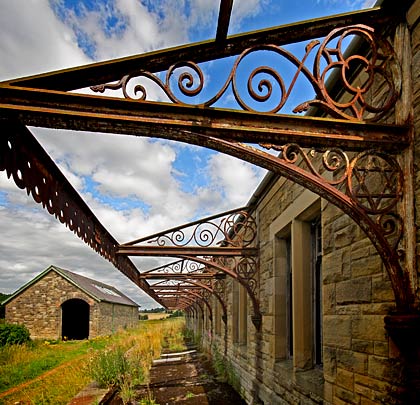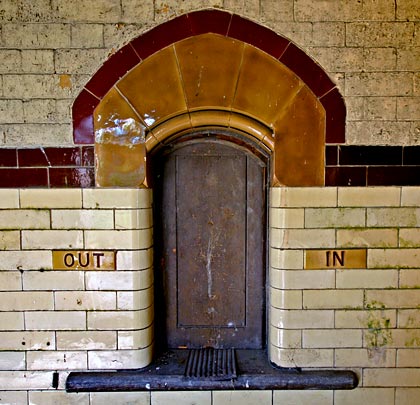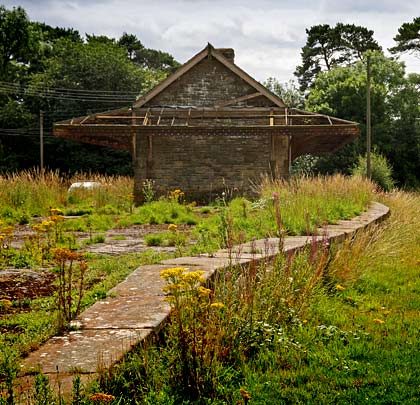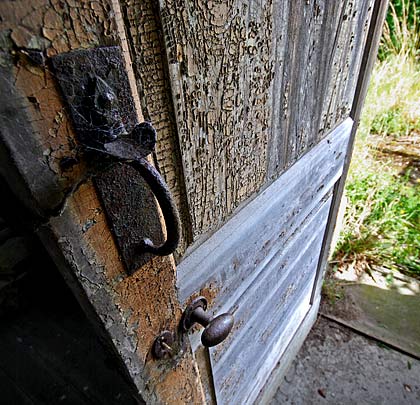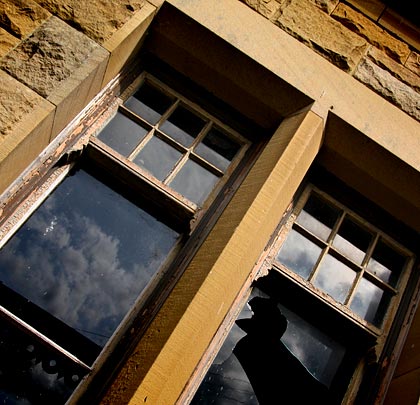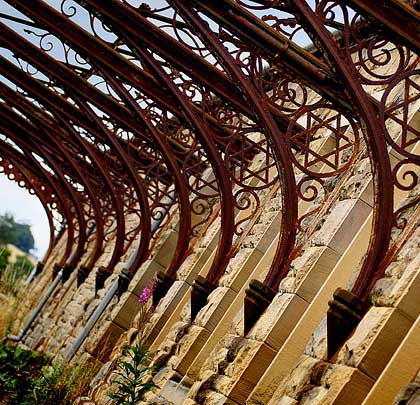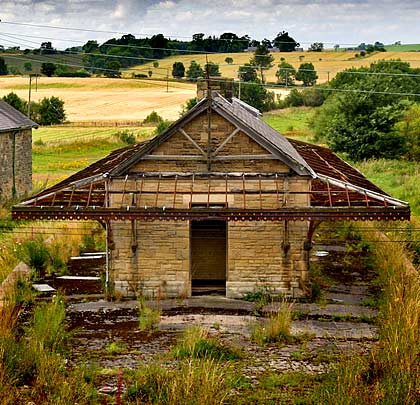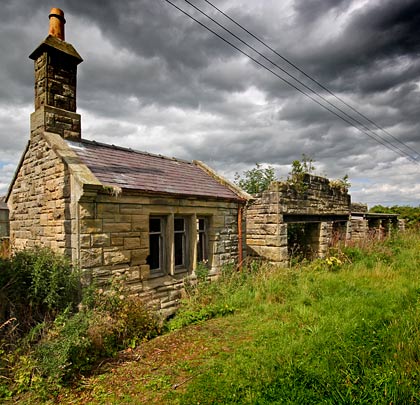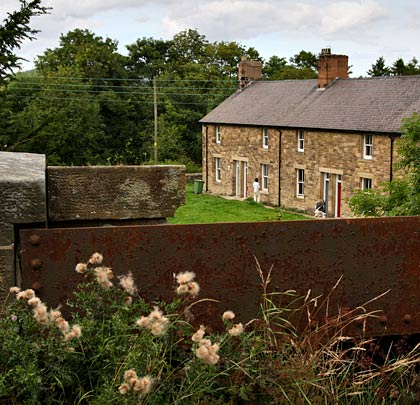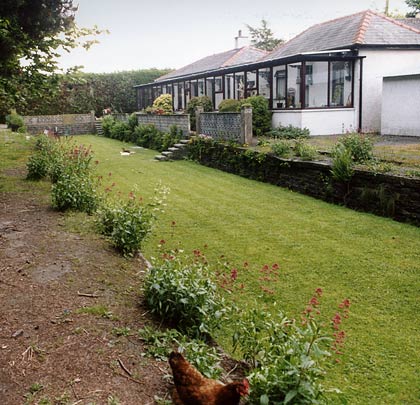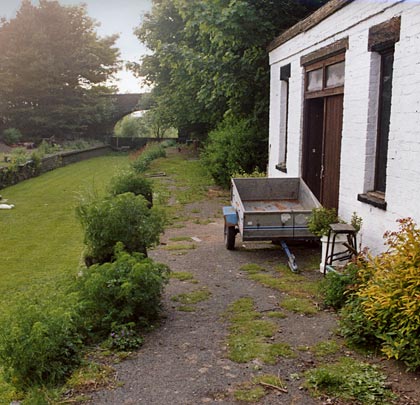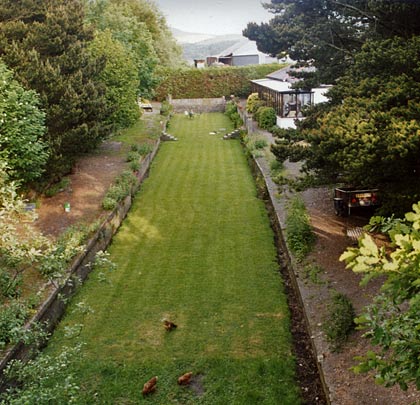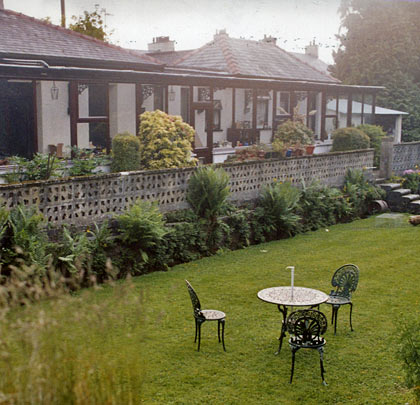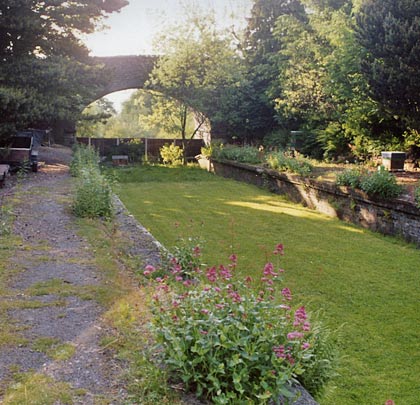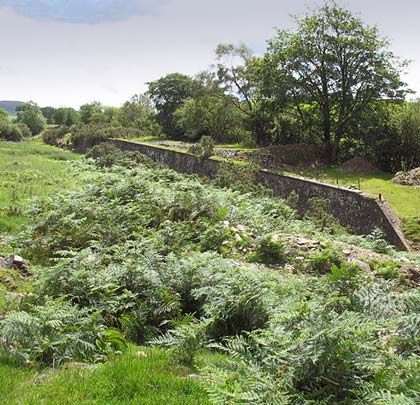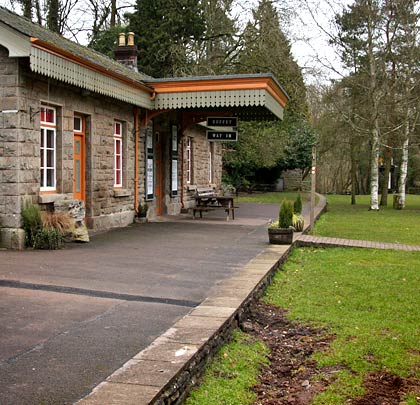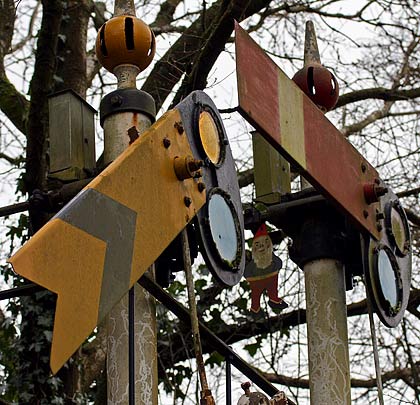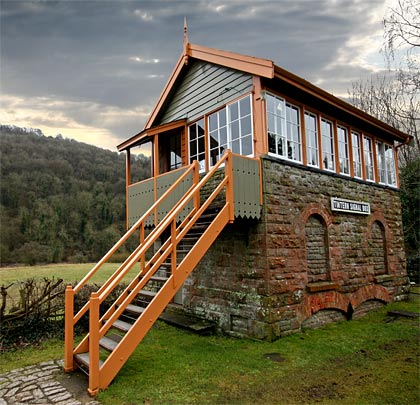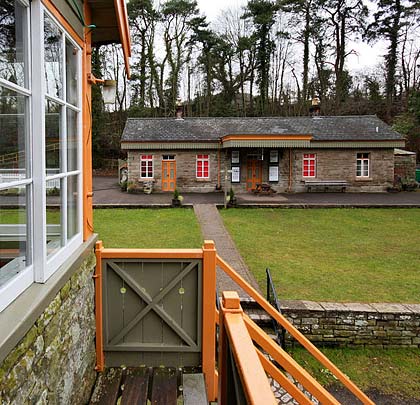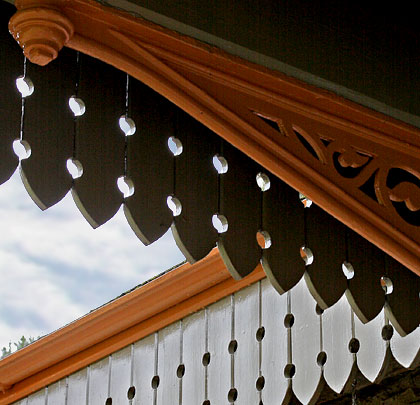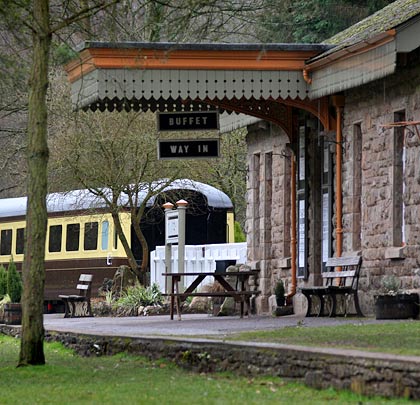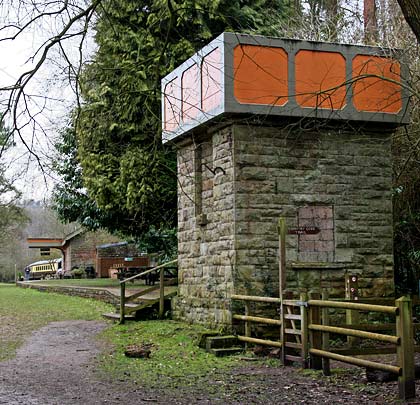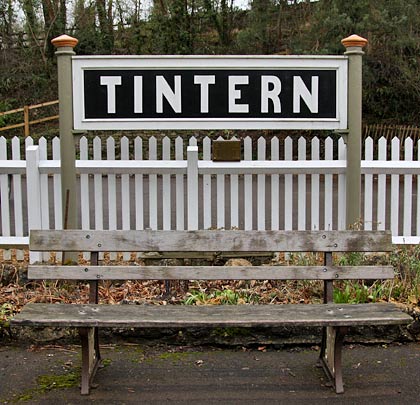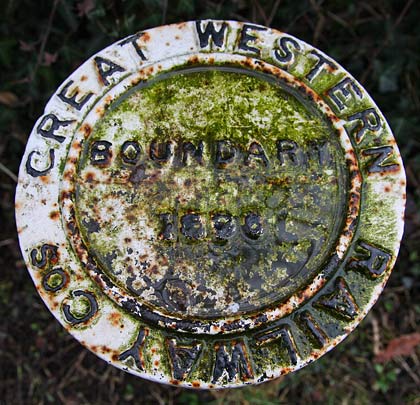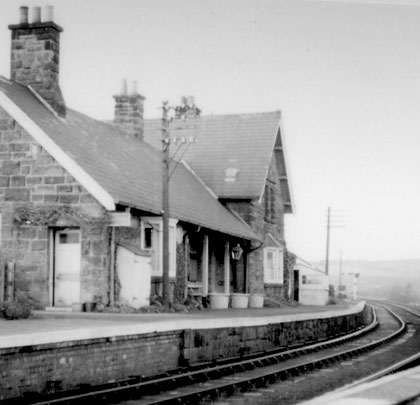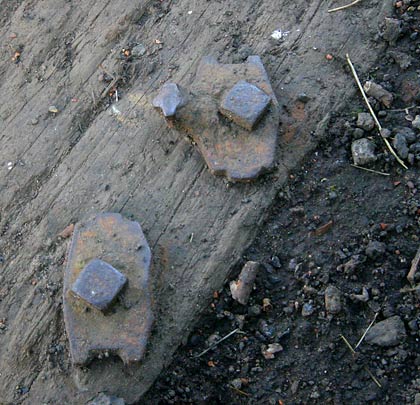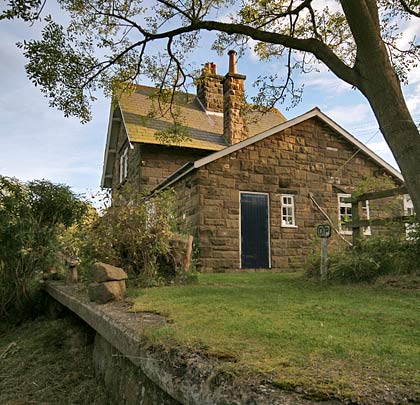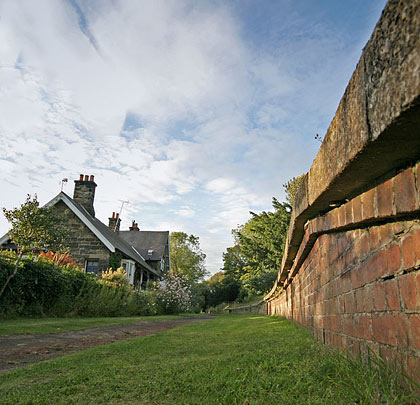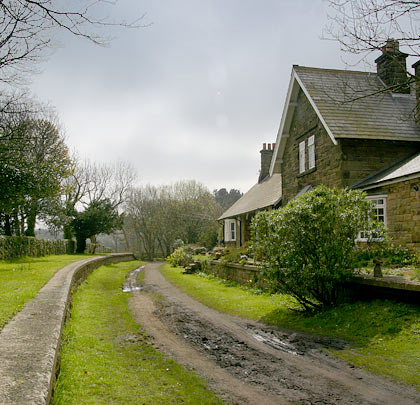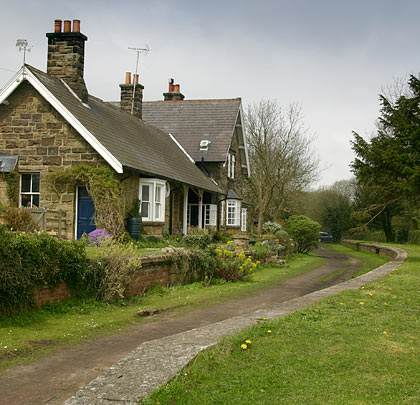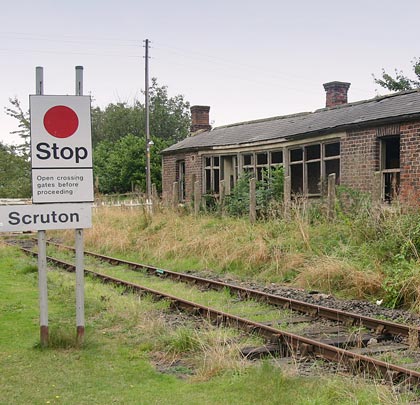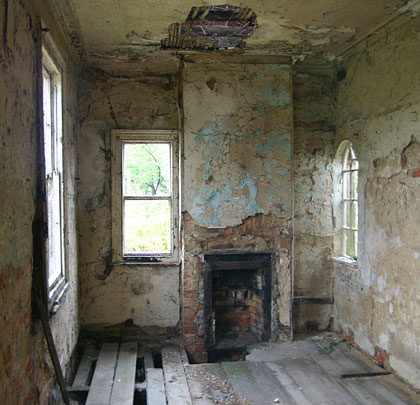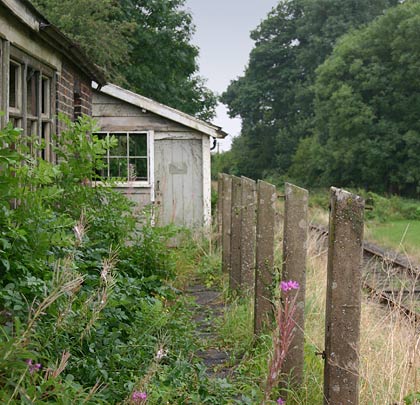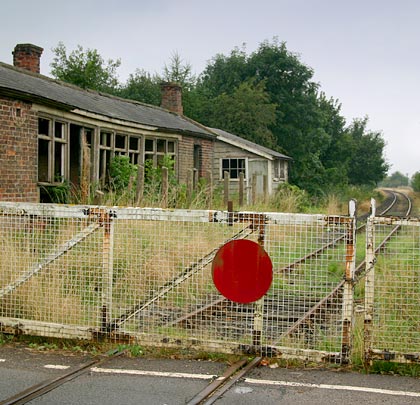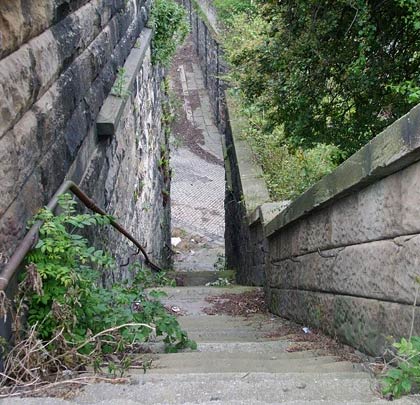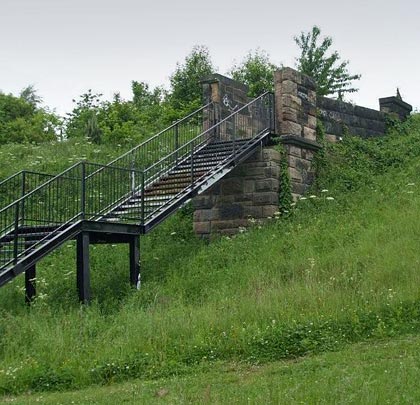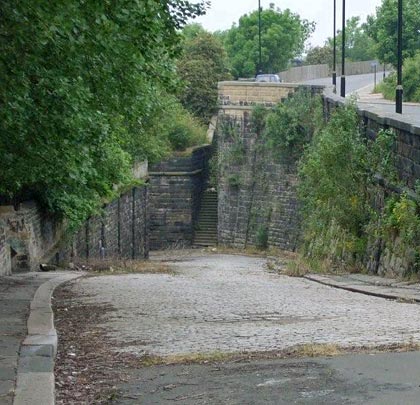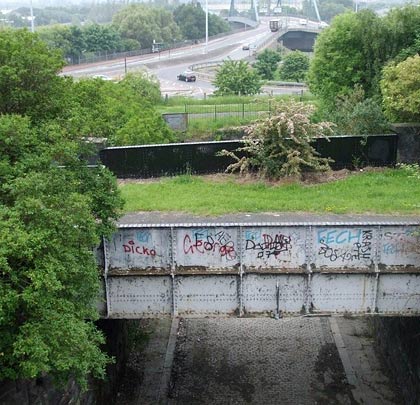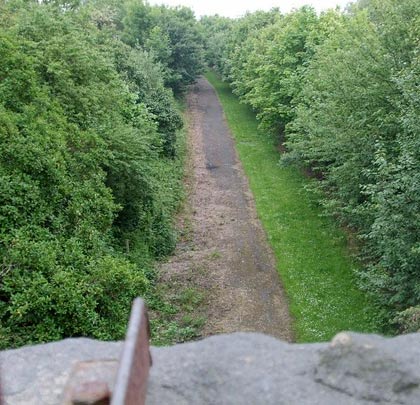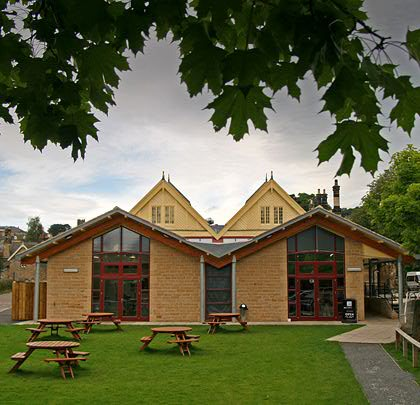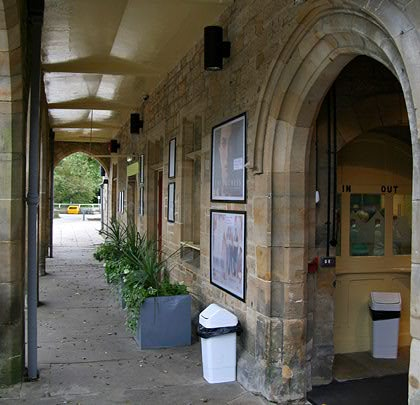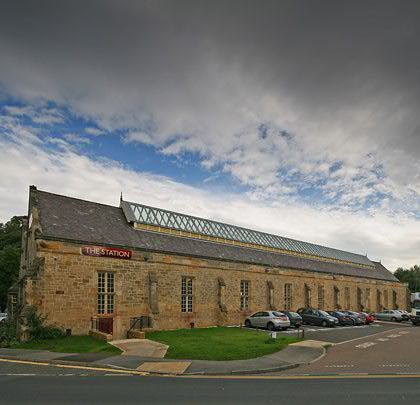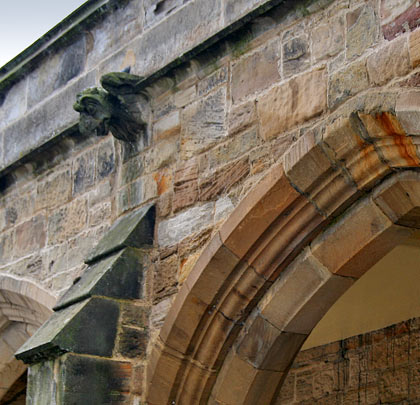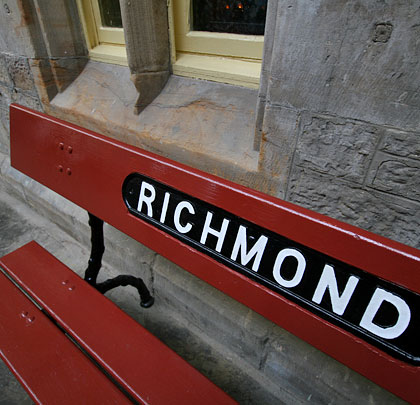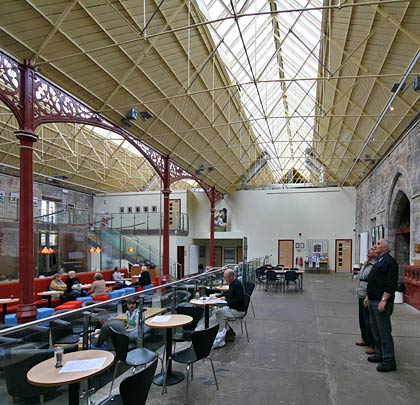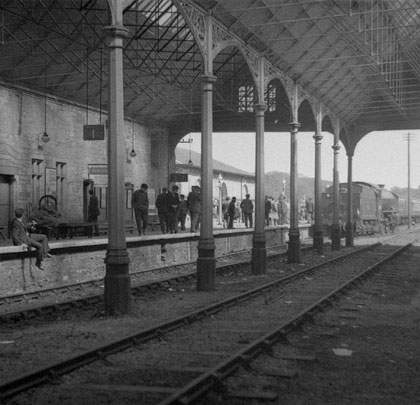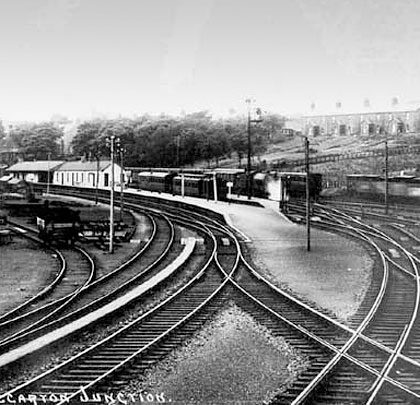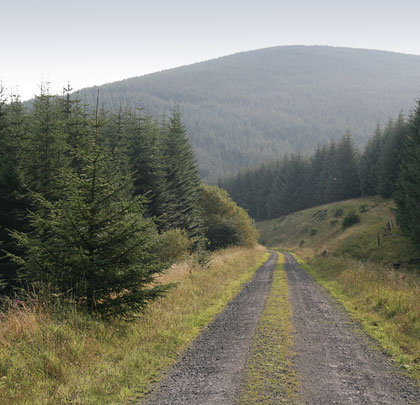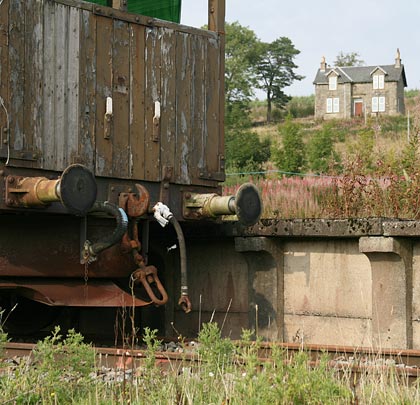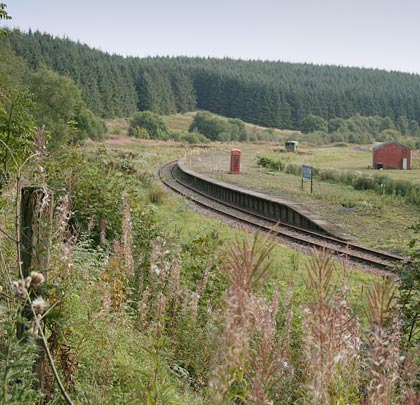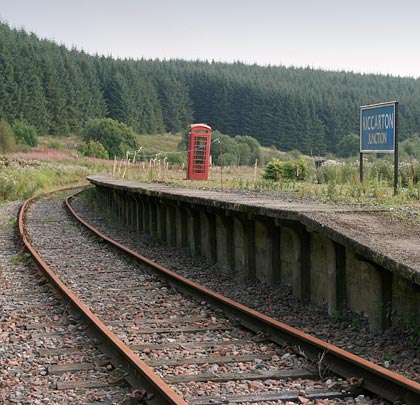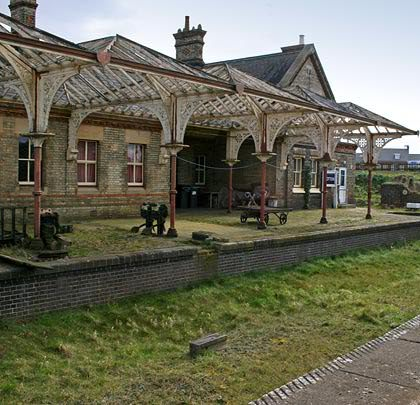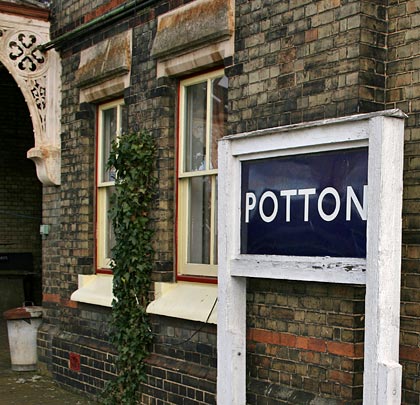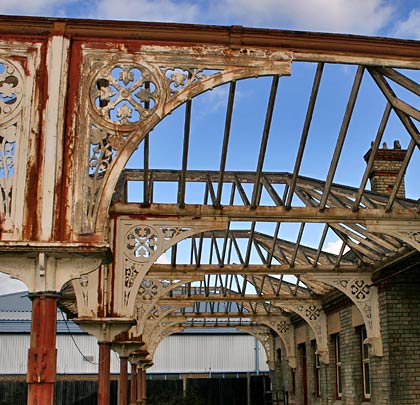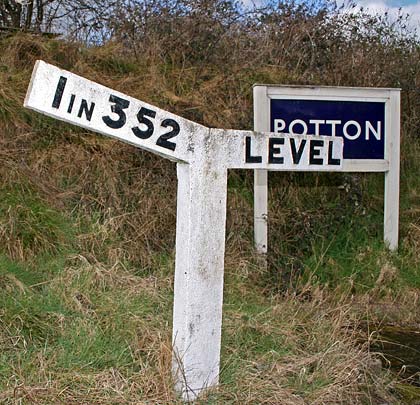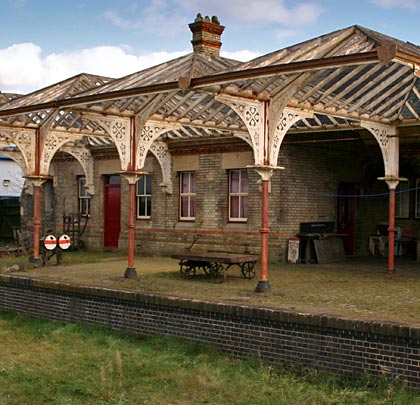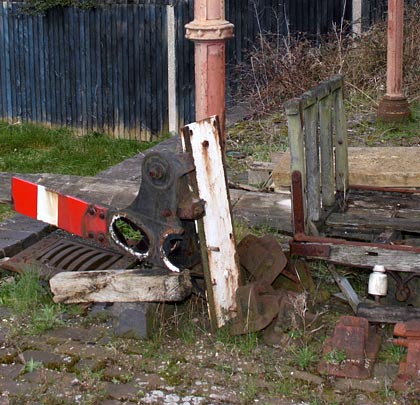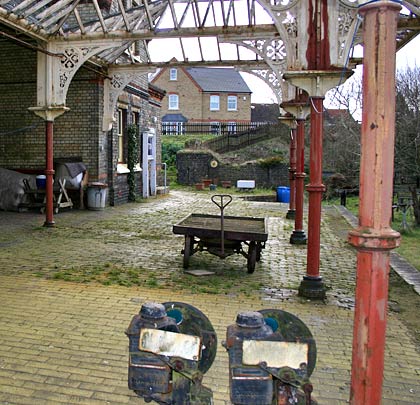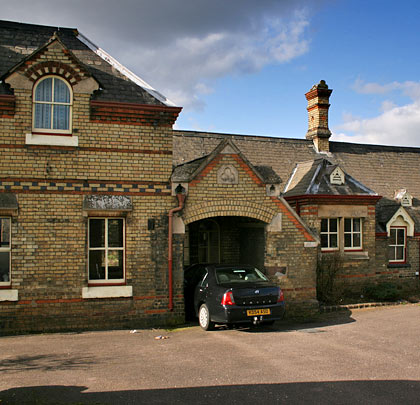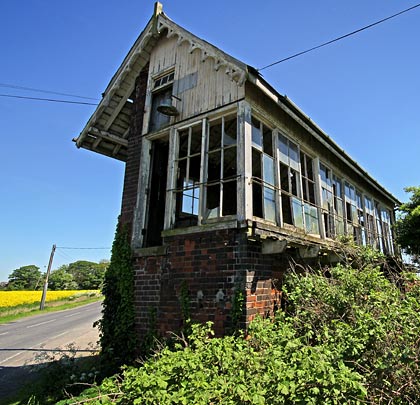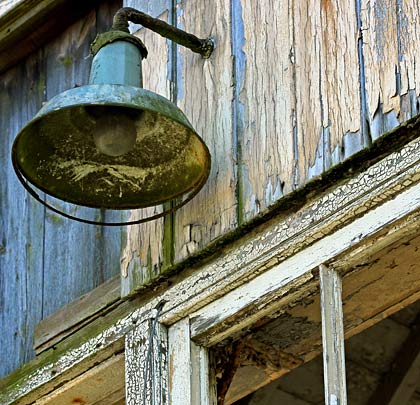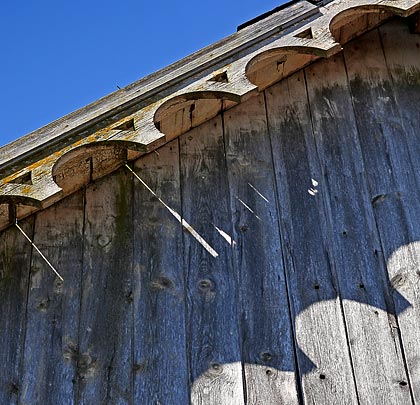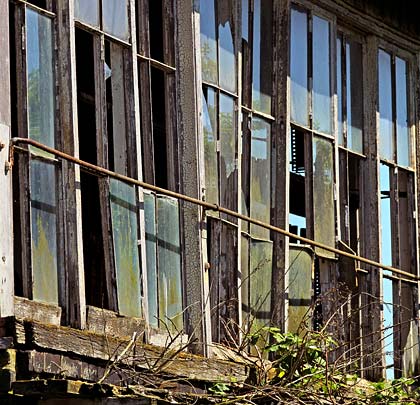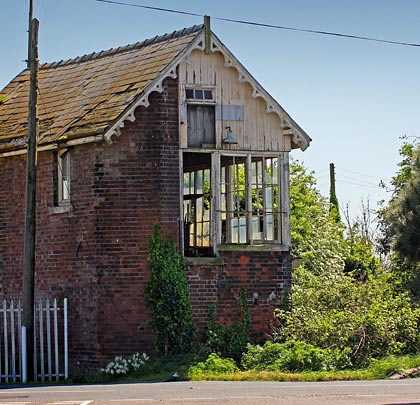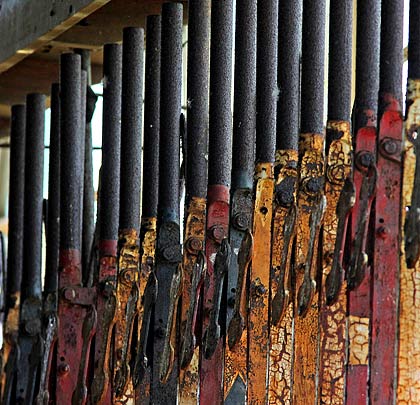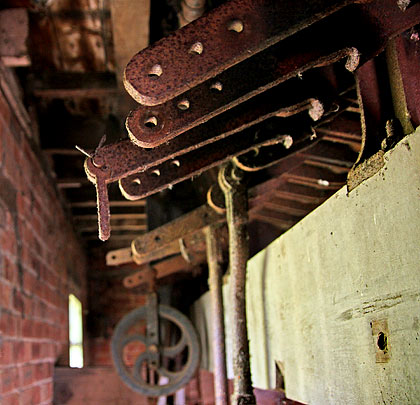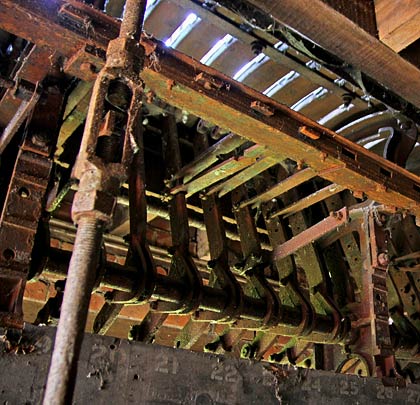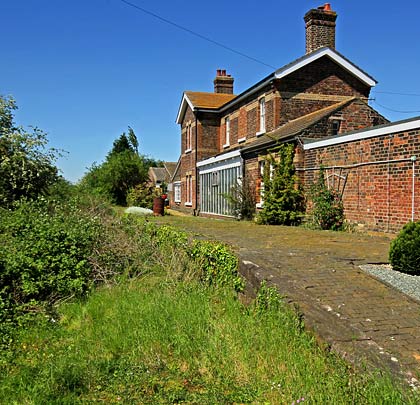Whittingham Station
Whittingham Station
The glass has gone from the canopy but the ironwork remains largely intact. The engine shed looks set to be reborn as a fabulous home.
Opened on 5th September 1887, this extensive station was rather distant from the village after which it is named, being more than a mile to its east. Construction of the route received considerable support from Lord Ravensworth, a local landowner, and the station was built very much for his benefit.
Whittingham boasted the only island platform on the single track branch, creating one of two passing loops, the other being at Wooler. As well as its large main building, the site boasted a signal box and water column to the east as well as five sidings to the west serving a goods shed, goods platform, loading bay and coal drops – the latter also having a weighbridge. The substantial Station Master’s house sits close to the south-west corner of the platform, overlooked by a road-over-rail bridge.
The passenger service was short-lived, ending on 22nd September 1930, but the goods facilities continued to welcome traffic until March 1953.
Although the decorative cast iron canopy has long since lost its glass, the platform building adorned by it is now Grade II listed and awaiting restoration as a dwelling. Five adjacent railwaymen’s cottages are also undergoing refurbishment and will soon become holiday lets.
 Sept 2009
Sept 2009
Whittingham Station
Trawsfynydd Station
Trawsfynydd's main station building - on the Down side of the old line - is now a private residence.
Today, a manicured lawn occupies the trackbed between the platforms at Trawsfynydd Station. It was the largest intermediate stopping point on the Great Western’s Bala-Blaenau Ffestiniog branch, boasting a loco shed, water tank and signal box.
Just to the north were military sidings serving a nearby Army range. After World War II, train loads of unused ammunition came here for disposal.
The last train to travel the line passed through the station on 27th January 1961.
(Eric Jones’ photo is used under this Creative Commons licence.)
 Sept 2009
Sept 2009
Trawsfynydd Station
Tintern Station
Whilst the station buildings have been beautifully preserved, the trackbed is now grassed over.
(Pictures 1-5 © Philip Lindhurst; picture 6 © Eric Jones)
The area around Tintern became a popular tourist attraction during the latter part of the 19th century due, in part, to the ruins of its abbey. This ensured that the station, opened in November 1876, became a well known stopping point on the Wye Valley Railway, despite being almost a mile from the village centre.
The line approached from the south through a tunnel of 182 yards before emerging onto a bridge across the river and then entering the station. It was the largest on the branch, consisting of a stone building on the Up (northbound) platform, a roofed island platform, goods shed, loading bays, cattle pens, sidings and a Down loop which handled many of the ‘Abbey excursions’. Movements were controlled from the signal box which overlooked the platforms.
Despite the introduction of diesels railcars in the 1930s, passenger services came to a halt on 5th January 1959, with freight ending in 1964. Since then, some of the trackbed has been converted into a footpath whilst the station building’s have become a recreational and refreshment centre. Although the island platform has gone, the signal box remains and has been sympathetically restored.
 January 2009
January 2009
Tintern Station
Staintondale Station
The view north, fifty years ago.
Staintondale Station, on the old Scarborough-Whitby route, served a few isolated houses. It’s now a private residence but visitors can pass between its platforms on the coastal walk which follows the trackbed of this picturesque line.
 Sept 2010
Sept 2010
Staintondale Station
Scruton Station
Soon, the station could again form part of Wensleydale's railway.
Scruton Station looks rather dilapidated but there’s a distant glow of hope on the horizon thanks to the Wensleydale Railway. A little-used section of line passes the station and the organisation aims to introduce a pasenger service on it when a connection is finally made with Northallerton. Since we took these pictures, some of the greenery has been removed and the crossing gates changed.
 July 2008
July 2008
Scruton Station
Scotswood Station
The station was accessed by steep steps from the approach road.
Scotswood Station sat at the junction of the North Wylam branch and a line from Blaydon. To its west, on land between to two routes, was a goods yard. In 1879, forty years after it opened, the station buildings succumbed to fire. The southern platforms saw their last passengers in 1966 whilst the final train up the branch departed on 1st May 1967. Although few relics remain of the station itself, both trackbeds now host cycle paths.
 July 2008
July 2008
Scotswood Station
Richmond Station
The two-ridged main shed peers from behind a modern extension.
(All photos © Neil Russell)
Under powers granted in 1845, the York & Newcastle Railway opened a double-track branch from Eryholme – six miles south of Darlington – to Richmond on 10th September 1846. A temporary wooden platform served as a terminus until the permanent building welcomed its first passengers on 9th April 1847. Its layout included generous goods facilities as well as staff accommodation.
The main building was the work of the architect G T Andrews of York and specifically designed to blend in with this market town’s character. The two-ridge train shed, lit by gas, covered a platform line and two sidings. The original platform was both low and short but it was lengthened in 1860 and 1915, on the latter occasion to cope with increased military traffic from the newly-established Catterick Camp. In its final form, it was 268 yards long.
A rearrangements of the offices and waiting rooms occurred during the First World War and, at about the same time, a large window at the buffer stop end of the platform was opened up to create a door for handling parcels traffic. The station bookstall was removed in 1940 and, during the Second World War, the stationmaster’s office was requisitioned by the army as a base for the Railway Transport Officer. Electric lighting was finally installed in the late 1940s.
BR earmarked the line for closure in 1963 but this was vigorously opposed by locals; the proposal was duly withdrawn. However the next few years saw the line progressively run down. Goods traffic ended in 1967, allowing the railway to remove the sidings and signals. Passenger services were removed from the timetable on 3rd March 1969, after which the remaining track was lifted.
The main building lay derelict until the site was acquired by the District Council. In 2003, a community-based project was given the go-ahead to regenerate the station and it reopened in 2007 with two cinemas, an art gallery, heritage centre, food outlets and several rooms for public use. It is now a Grade II* listed building.
 July 2008
July 2008
Richmond Station
Riccarton Junction
A terrace of houses looks down over the complex junction layout.
The Border Counties Railway from Hexham and the Waverley route from Carlisle came together at Riccarton junction – a remote outpost boasting many facilities but no road access. A community of 30 cottages grew up around the railway. Although it was all swept away after closure, enthusiasts have dug out the up platform and laid a short length of track.
 January 2010
January 2010
Riccarton Junction
Potton Station
Grassed trackbed and glassless canopy, but Potton retains its charm.
Time has taken much of the gloss off Potton Station but its platforms and buildings cling vigorously to life.
Built by contractor Joseph Firbank, it boasts yellow gault brick with ornamental dressings in red and blue. The canopy over the westbound platform comprises five bays of iron and – once upon a time – glass.
Potton must have been an aromatic place to work – the station handled large quantities of manure and soot. The town’s first station – on a line from nearby Sandy – closed in 1861, four years after it first welcomed passengers.
 July 2008
July 2008
Potton Station
Postland signal box
A set of white timber steps formerly provided access to the door located on the north side of the box.
(All pictures © Philip Lindhurst)
In 1879 the Great Northern and Great Eastern railways presented Parliamentary proposals to construct a line from Spalding to Lincoln, completing a 123-mile freight route between Cambridge and Doncaster. Their intention was to tap into the profitable market for coal movements into East Anglia from Yorkshire.
Overseen by a joint committee, the route brought together a number of existing lines, amongst them the GN’s Spalding-March (Whitemoor Junction) connection which had opened on 1st April 1867. This served a number of isolated communities including Crowland where a station was established. It was renamed Postland in 1871.
On the south side of the station was a level crossing, adjacent to which is a Great Northern Type 1 signal box dating from 1882. Although now derelict, this evocative railway outpost still contains its original 35-lever frame. There were rumours of the box being demolished to make way for a road widening scheme but, as yet, it has evaded the bulldozers.
The March-Spalding line closed on 27th November 1982. However other signal boxes on the line have also survived, notably at Cowbit and French Drove.
Click here for pictures of Postland signal box in the early Eighties when it was still operational (see Page 2).
 December 2008
December 2008
